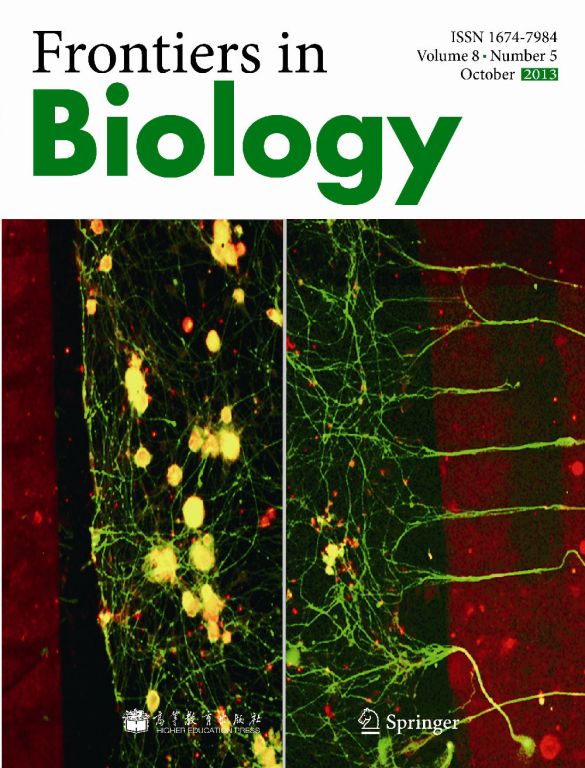博文
Frontiers in Biology 2013年第5期 Cover story
||

Cover story
Axonal regeneration in adult nervous system is the major barrier for successful recovery after central nervous system trauma. Poor regeneration of the adult nervous system is attributed to the low intrinsic regenerative capacity of adult neurons and the presence of an inhospitable environment at the injury site. To date, neurotrophins(NTs) represent one of the most promising candidates to enhance axonal regeneration by stimulating the intrinsic growth program of neurons; while reducing the inhibitory influence of the lesion environment.The cover image illustrated the ability of the neurotrophin NGF to induce axons growth from adult DRG neurons (green) through microchannelsand across an inhibitory barrier of chondroitin sulfate proteoglycan (red) towards a source of NGF located in the adjacent well (right panel). In the absence of NGF axons, a similar cohort of neurons fails to cross the inhibitory border and remain within the primary microfluidic chamber (left panel).
In this review, we discuss the ability of classical neurotrophins to promote axon sprouting or regeneration after CNS injury in several models. Dorsal root entry zone model is one such model to study axonal regeneration into the central nervous system. The attraction of this model is that the regenerating axons have to grow only a few millimeters to their territory in the CNS. This model hasbeen used to show neurotrophins are sufficient for functional regeneration of selective axons in the adult nervous system.The application of neurotrophins to promote regeneration or sprouting in other models, such as injury to the corticospinal tract, rubrospinal tract, or dorsal column is also discussed. Various methods like gene therapy,intrathecal injection and chronic infusion using osmotic mini pumps have been employed to accomplish neurotrophin therapy, with varying levels of success. Among these approaches, gene therapy offers the most robust and localized expression of neurotrophins without major side effects. Exogenous NTs can be conveniently expressed in general or specific cell types using respective promoters.Research in this area has made substantial progress in identifying different axonal population responding to distinct neurotrophins in establishing functional circuitry and behavioral recovery.
https://blog.sciencenet.cn/blog-54097-733051.html
上一篇:Frontiers in Biology 2013年第5期文章
下一篇:Frontiers in Biology入选“2013年中国国际影响力优秀学术期刊”